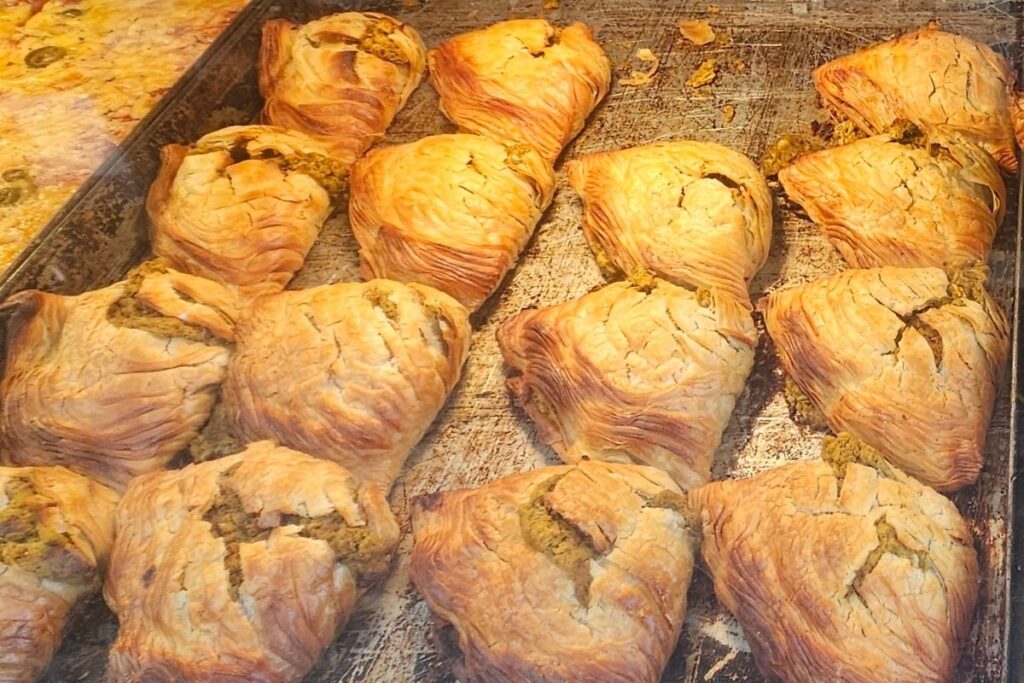In a country where fresh fish, olive oil and local produce are at the heart of our traditional cuisine, how is it that Malta ranks among the most obese countries in Europe? Could it all be down to the humble pastizzi?
Malta has recently been ranked as one of the most obese countries in Europe, as 1 in 3 people are obese. The Ministry of Health is continuously trying to create campaigns such as “Move to Improve” to tackle this issue, even though statistics show that it’s getting worse.
So far, these campaigns seem to have had little impact. According to a Eurostat report, in 2002 the adult obesity rate was around 23%; by 2015, it had gone up to 25 %, and it went up to 34.6 % in 2022.
And why, after all these campaigns, are we still choosing unhealthy food, assuming that overconsumption is the main cause? Could it be a lack of education? But the government is supposed to be teaching schoolchildren how to maintain a healthy lifestyle and has even banned unhealthy products from being sold in canteens.
Nonetheless, in 2023, the World Health Organisation revealed that we have one of the highest rates of childhood obesity in Europe, and approximately 1 in 5 are obese. WHO data also shows the problem is especially severe among boys, who consistently report higher obesity rates than girls across southern Europe.
So if the government is trying, we are surrounded by fresh products, and we are educating the future generation, why is the issue still getting worse?
Is it cultural and habitual?
If so, let’s look back in time to see where this problem might have come from.
Many of us lived in a period when Malta lacked variety on the supermarket shelves. For example, in the 1980s you could only find one brand of Maltese-made chocolate, and a bar of Cadbury’s chocolate was something you had to smuggle through customs when coming from overseas.
“There was only one type of chocolate called ‘Desserta’, and it was extremely bad,” my 78-year-old grandmother recalls with a laugh. “Everyone was desperate for a piece of chocolate”.
My grandmother even remembers that when her mother wanted her to buy a specific brand of canned milk from their local grocer in the late 1950s and she went to search for it at the shop. She couldn’t find it, instead noticing that there was now only one brand of canned milk. She went back home to tell her mother, who was disappointed, and then my grandmother said to her jokingly, “Now this is what the government brought you!”
In those days, you made do with what you had, she reminicises.
This is a huge contrast to the consumerism of today in which we are surrounded by every brand and chocolate which we could ever dream of. And is it because we were once deprived of many foods that now we tend to overindulge? This is even more so when it comes to our children; we are inclined to give them what we didn’t have. Maltese generosity is legendary, hence we have the phrase “ejja kul ha tikber” (eat so you’ll grow up) or “ara kul kollox issa ta!” (make sure you eat everthying!), and God forbid you tell a Maltese nanna that you’re on a diet.
Also during my grandparents’ youth, everything was homemade.
“There were no processed foods. Even the meat tasted better; everything was free-range.” “We didn’t have all this fast food.”
The closest thing they had was pastizzi.
“Hawn tal-pastizzi sħan u tajbin, tliet soldi l-wieħed, erba’ xelini. (Pastizzis are here, warm and delicious, three pennies each, four shillings,)” my grandparents repeat with a touch of nostalgia. This was the call of the local baker as he walked through the streets, urging people to buy.
With ricotta, peas, and chicken, pastizzi remain a cornerstone of the Maltese identity. Tourists are encouraged to try them in every guidebook, and locals still swear by them as one of the ultimate comfort foods. However, that innocent pastry that was once so comforting may now be one of the quiet drivers of Malta’s high obesity rate.
Did you know that a single pastizz consists of about 250 calories, and if you’re hungry, you won’t stop there: you probably need both pea and cheese, and maybe chicken too? So you’ll end up eating three or four of them in one sitting, which would be about 1,000 calories, far more than you need for a quick snack.
Pastizzi are just one example of a wider pattern. From childhood, we are taught that food is comfort, celebration, and generosity. And the abundance we now enjoy has made it easy to overindulge without thinking twice.
Yes, pastizzi may seem harmless, but unless we rethink our relationship with food, they may very well be the death of us.
